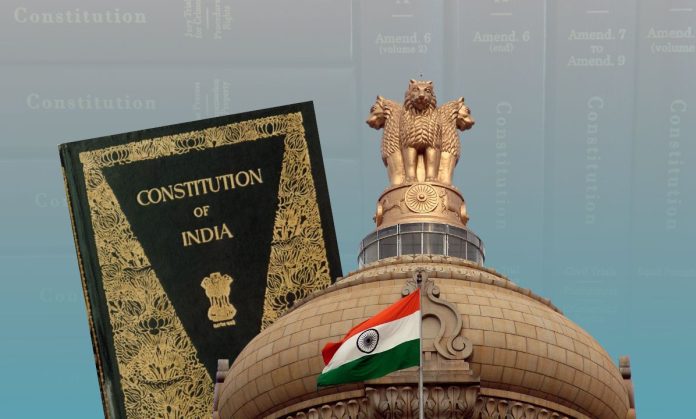What if I tell you that kite flying is illegal in India? Didn’t know that right? Well, it’s mentioned in our Indian Constitution. As per Section 11 of the Indian Aircraft Act of 1934, “Whoever wilfully flies an aircraft in such a manner that causes danger to any person or property on land, water or in the air shall be punishable with imprisonment for a term which may extend to 1 [two years, or with fine which may extend to ten lakh rupees], or both.” The act defines an aircraft as any machine or device which is supported by atmospheric pressure. This includes fixed and free balloons, gliders, kites, airships, and flying machines.
Had you known your constitution well, you would have been aware of the existence of such an act. Now imagine how many of your constitutional rights, duties and laws you must be completely unaware of.
As a citizen of India, it is necessary for each one of us to know our constitution. Of course, it’s difficult to know every little detail about the world’s longest written constitution, but we must know some crucial laws that govern our day-to-day lives.
Our civics lectures in school weren’t sufficient enough to educate us well about the Indian Constitution. We hardly remember anything about it except for some like Article 19 of our constitution that ensures Freedom of Speech and Expression.
Education about the constitution must start in the school itself and vigorously. Simply having one chapter in the Civics textbook dedicated to the Indian Constitution isn’t enough. Learning about the Indian Constitution is a process that spans a long time.
Simply knowing the constitution’s Articles or Sections isn’t enough. Understanding the constitution involves much more than just this. One must know the fundamental rights and duties each Indian citizen is entitled to by the Indian Constitution, the difference between them, what is the difference between acts and sections, what is the preamble, what is stated in the preamble to the Constitution of India, the difference between articles and schedules, how many articles and schedules does the constitution have, what is an amendment, what are the constitution’s salient features, etc.
It is also important for each one to interpret the constitution positively from an early age so as to thoroughly understand the true meaning of even the most basic terminologies like sovereignty, secularism, justice, equality, fraternity, liberty, freedom, integrity, etc. This will help the citizens to co-reside in the country peacefully.
Here are a few basic yet crucial things to know about the Indian Constitution.
- 26th November is observed as Constitution Day.
- We celebrate Republic Day on 26 January of every year, as on this day, the Constitution of India came into effect in the year 1950.
- Ours is the longest constitution in the world. It has a preamble, 22 parts with 448 articles, 12 schedules, 5 appendices and 115 amendments.
- The preamble of India declares the country a sovereign, socialist, secular and democratic republic. It also mentions the objectives of the constitution which are securing and ensuring justice, liberty, equality for all citizens and promoting fraternity to maintain the unity and integrity of India. A preamble is an introductory statement at the beginning of the constitution that explains the document’s philosophy and objectives.
- The original copies of the constitution were handwritten in English and Hindi. These original copies are stored and preserved in the Central Library of the Indian Parliament.
- The drafting of the constitution for independent India took almost three years to complete. Dr B.R Ambedkar is known as the architect and father of the Indian Constitution. He was assigned the responsibility of drafting the constitution. He formed a committee consisting of seven members, the ‘Drafting Committee’. He acted as the Chairman of the committee. The other members of the committee included N. Gopalaswami, Alladi Krishnaswami Ayyas, K.M Munshi, Saijo Mola Saadulla, N. Madhava Rao and D.P Khaitan.
- Our constitution is a mix of borrowings from the constitutions of various other countries that include the U.S., the U.K., France, Japan, Germany, and the former Soviet Union (USSR).
- Our constitution is called a living constitution as it can be amended or changed at any time and any number of times. New laws can be added, and old ones scrapped.
India is currently laced with strong and multiple religious, cultural and political ideologies, intolerance, caste and gender discrimination, and other such social issues. In such a scenario, it’s extremely important for a country to have an informed citizenry. Thus, it is crucial for each one of us, especially the youth (the future leaders of the country) to know about, and understand our constitution, have the right attitude towards it and interpret it correctly. Only then can we take steps towards building a positive atmosphere to live in, in our country.





























